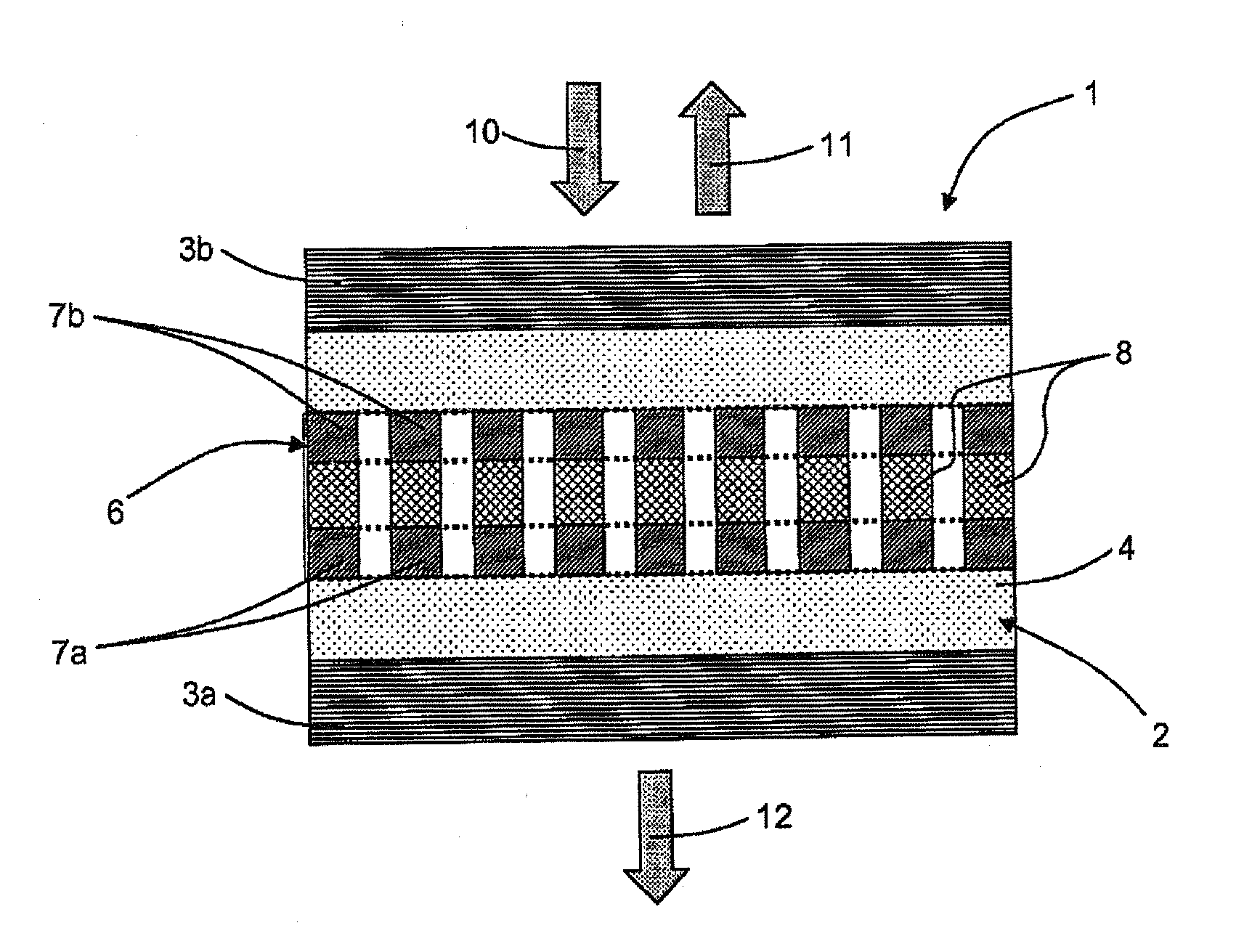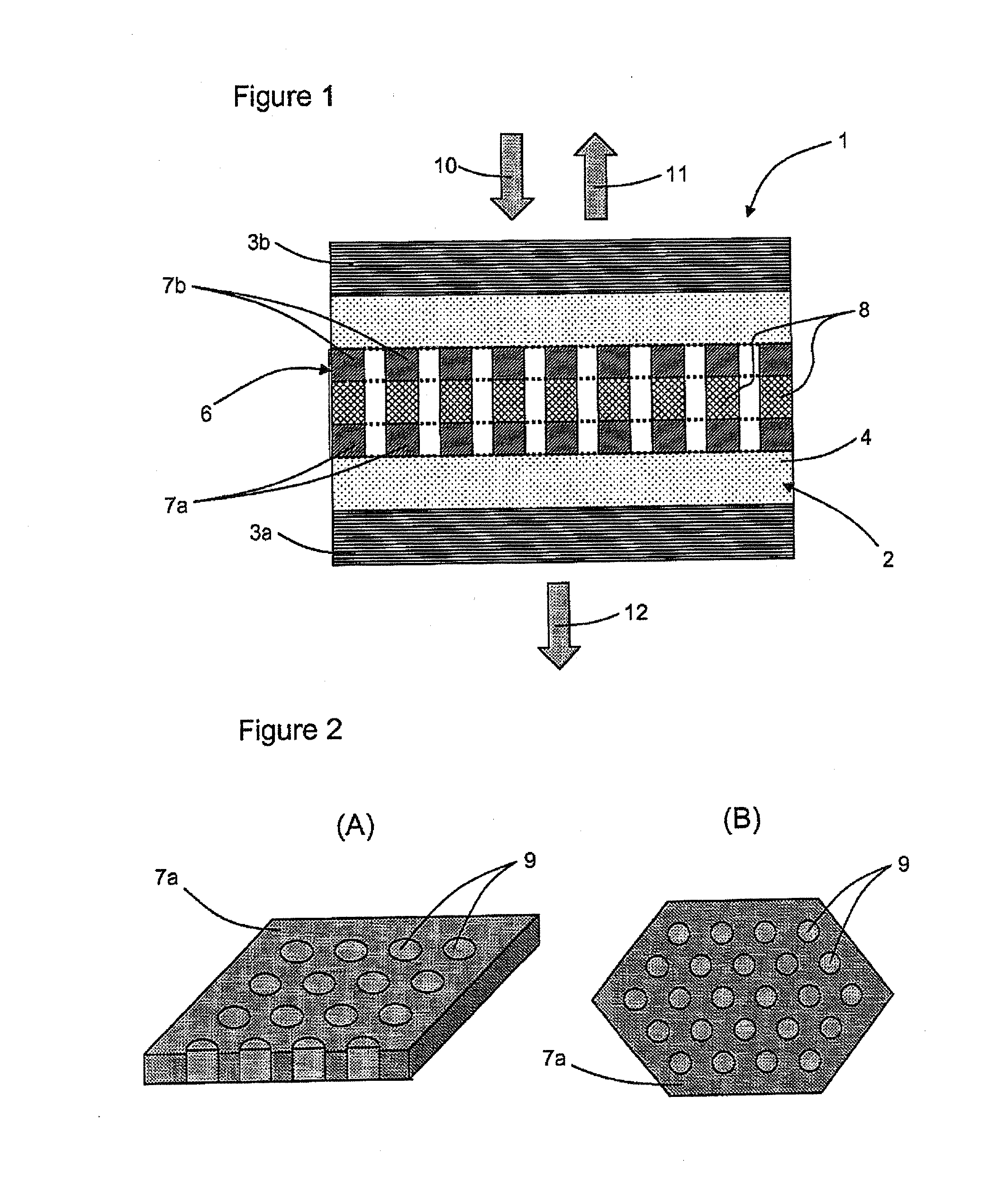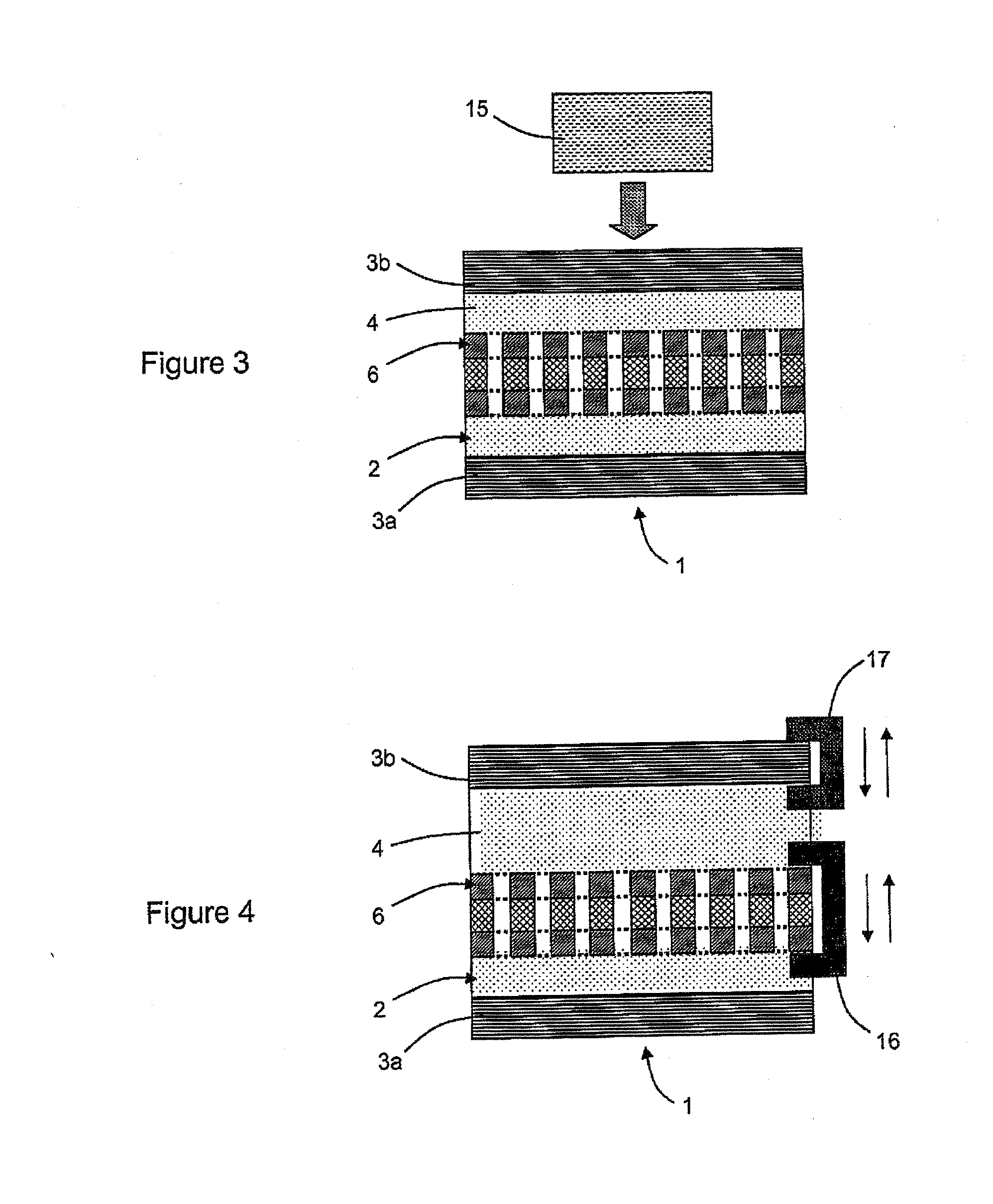Device for controlling optical frequency, method of manufacturing such a device
- Summary
- Abstract
- Description
- Claims
- Application Information
AI Technical Summary
Benefits of technology
Problems solved by technology
Method used
Image
Examples
first embodiment
[0053]With reference to FIG. 1, a device 1 for controlling optical frequency according to the invention comprises two coupled resonant members: a vertical cavity 2 and a photonic crystal membrane 6. This device associates these two members 2 and 6, which are liable to act individually as optical resonators. It operates around a central working frequency F0, to which corresponds a working wavelength λ0, by generating two eigen optical frequencies whereof the values are located symmetrically on either side of the central optical frequency F0.
[0054]The vertical cavity 2 is a Fabry-Pérot type cavity. It comprises two Bragg mirrors 3a and 3b. These mirrors are parallel and constitute partially reflecting walls whereof the reflection coefficients are higher than 95%. They are constituted in one succession of high index layers (silicon—Si) and low index layers (silicon dioxide—SiO2). Between these two walls, the cavity 2 comprises a medium 4, constituted for example in silicon dioxide (SiO...
second embodiment
[0067] the medium 4 comprised between the two walls 3a and 3b of the cavity 2 is a laser effect medium. The device 1 receives optical information transported respectively at frequencies F1 and F2, whereof the modulation frequencies are identical. The active medium is capable of absorbing at the two frequencies F1 and F2. The optical pumping means 15 are arranged such that only the power at frequency F2 makes it possible to ensure the absorption saturation. When the laser threshold is reached, the structure converts the received power at frequency F2 into a coherent signal at frequency F1.
third embodiment
[0068] the nonlinear optical properties of the material constituting the layer of photonic crystal of the membrane 6 are of the order of 2. The device 1 receives optical information transported respectively at frequencies F1 and F2, whereof the modulation frequencies are identical. The active medium is capable of absorbing at the two frequencies F1 and F2. The optical pumping means 15 are arranged such that the power at frequency F1 or the power at frequency F2 interchangeably makes it possible to ensure the absorption saturation. Hence, signals of frequency F1+F2 and F2−F1 may be generated. The high confinement of two eigen optical resonant modes in a same place at frequencies F1 and F2 makes it possible to reinforce the efficiency of the optical frequency conversion.
[0069]Examples of embodiments of the invention for wavelength tuning are illustrated by FIG. 4. To this end, the device comprises means 16 for vertically moving the membrane 6 and means 17 for relatively vertically mov...
PUM
| Property | Measurement | Unit |
|---|---|---|
| Frequency | aaaaa | aaaaa |
| Wavelength | aaaaa | aaaaa |
| Reflection coefficient | aaaaa | aaaaa |
Abstract
Description
Claims
Application Information
 Login to View More
Login to View More - R&D
- Intellectual Property
- Life Sciences
- Materials
- Tech Scout
- Unparalleled Data Quality
- Higher Quality Content
- 60% Fewer Hallucinations
Browse by: Latest US Patents, China's latest patents, Technical Efficacy Thesaurus, Application Domain, Technology Topic, Popular Technical Reports.
© 2025 PatSnap. All rights reserved.Legal|Privacy policy|Modern Slavery Act Transparency Statement|Sitemap|About US| Contact US: help@patsnap.com



